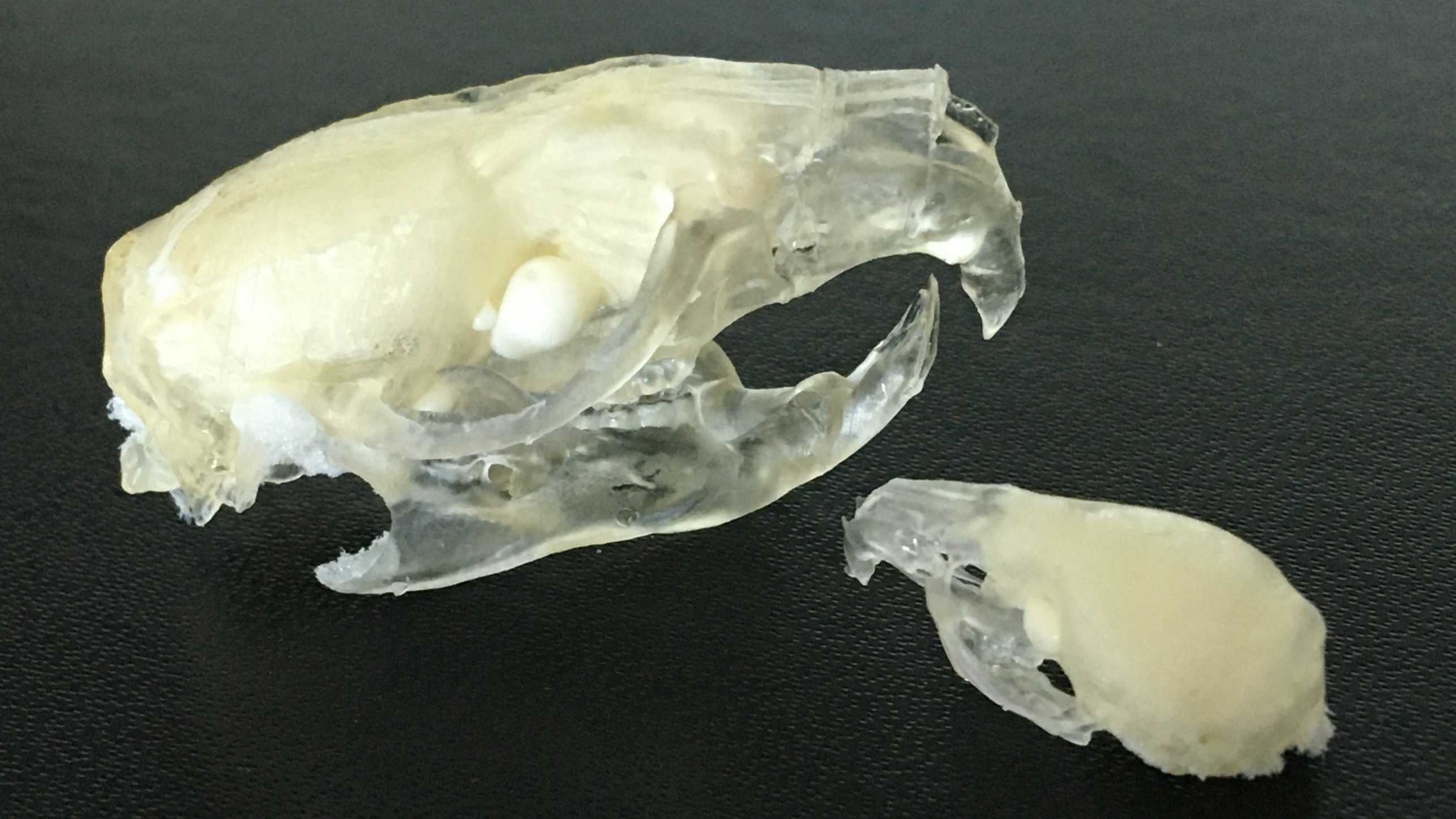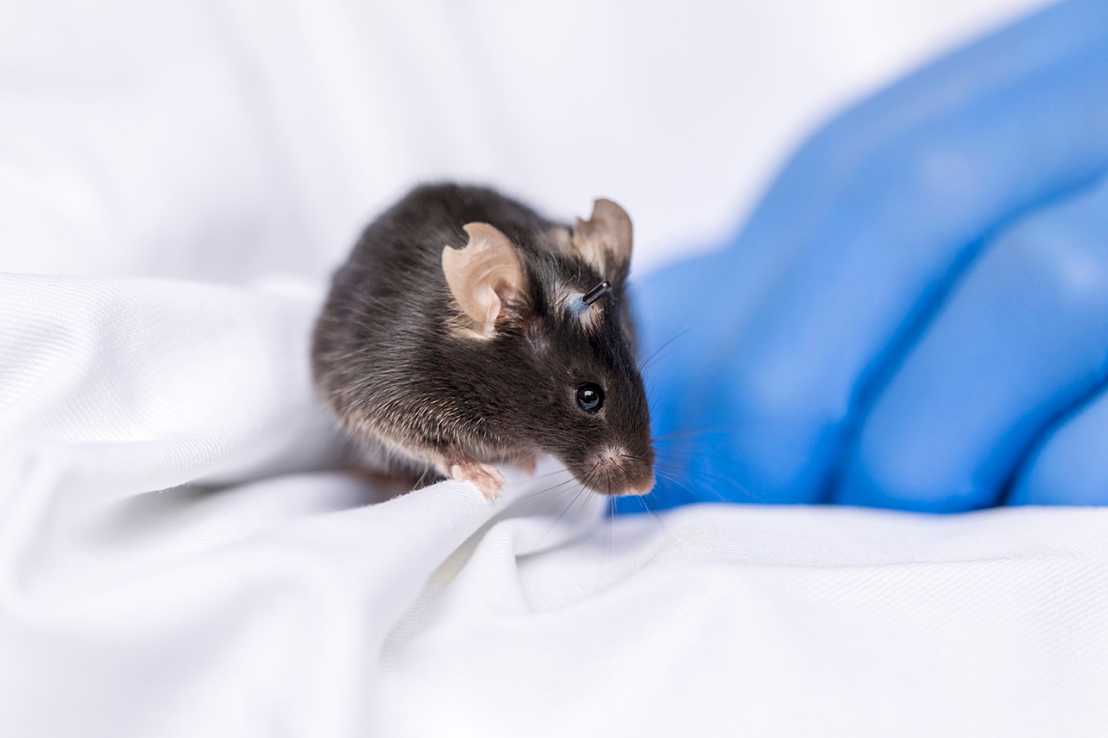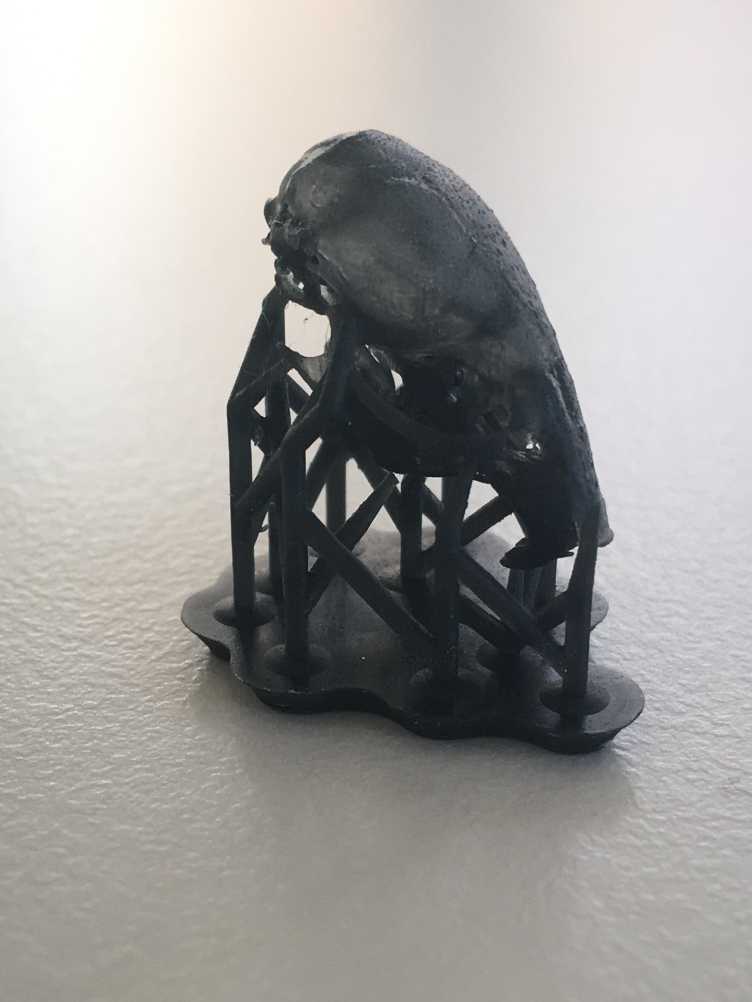Rodent skull from the 3D printer for training
Researchers conducting neuroscientific animal experiments at ETH Zurich can now practice their handlings on 3D-printed models. This benefits animal welfare.

To better understand the brain and its myriad functions, animals are also studied. In such experiments, researchers influence brain cells, for example, or observe their activity while the animals solve a task. This requires injecting substances or implanting a small diode into the brain in order to conduct light pulses into the tissue or to read the activity of individual brain cells. Such demanding interventions have to be practiced. At ETH Zurich, researchers now have the opportunity to practice this on models of animal skulls from the 3D printer before practicing on dead animals or later on live animals.

The training models, which can be produced quickly and inexpensively, support and refine the training of animal experimenters. They can be used to practice the most common neuroscience techniques such as brain injections or head implant placement. The more practice animal experimenters have, the more it benefits animal welfare.

Using 3D-printed models of mouse and rat skulls dates back to work by researchers at Roche in Basel. They published the technique as well as the instructions for 3D printing in 20211. Marcy Zenobi-Wong, Professor of Tissue Engineering and Biofabrication at ETH Zurich refined these instructions and established the fabrication at ETH Zurich on an "Original PRUSA SL1" printer with transparent and with black "Value" resin. The support struts on the outside of the skull required for 3D printing can be removed after the resin has cured. Finally, they are filled with insulating foam to simulate the brain mass. In the ETH models, the skin is not imitated.
The sliced model file (.sl1s) for the printer calibration can be obtained via the .
All ETH researchers working in the field of neuroscience received some 3D-printed models for testing. The researchers rated the models as useful and realistic. Therefore, ETH Zurich decided to centrally manufacture this animal-free exercise method. Thanks to continuous support from Marcy Zenobi-Wong, all ETH researchers can order the number of mouse and rat skulls they need free of charge through the .